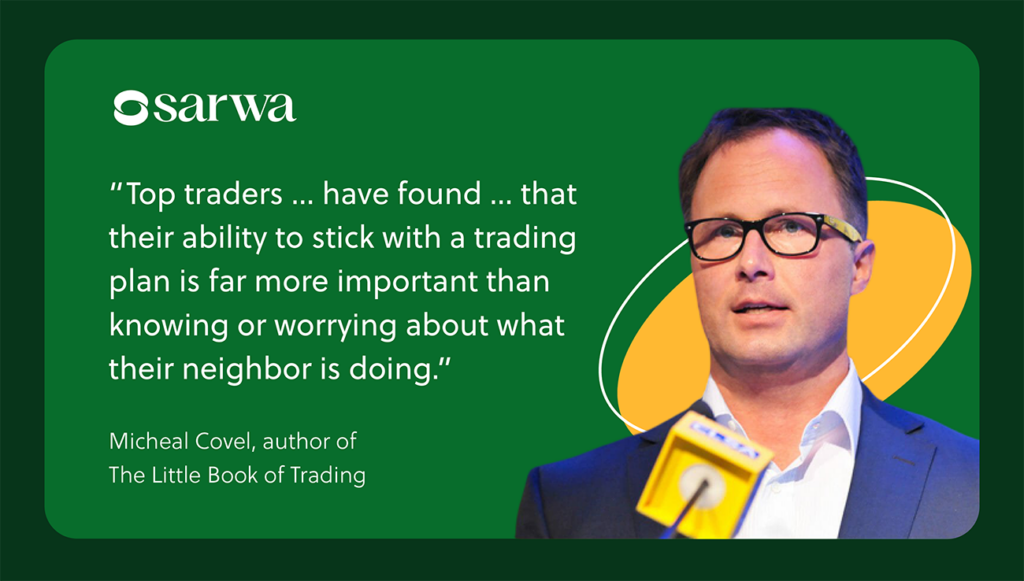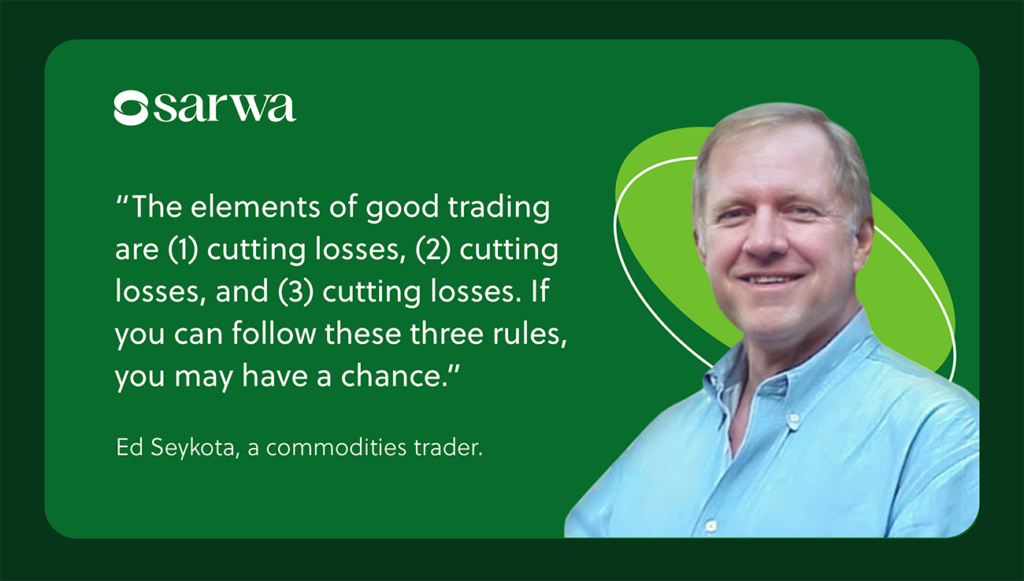It is said that when you don’t know how other people are achieving success, you would think everything boils down to luck. This is how many unsuccessful day traders feel.
They thought they could jump into the market and make millions but were disappointed, leading to:
- Loss of money
- Loss of credibility for those who traded on borrowed funds or invited others to trade
- Ongoing fear of the stock market
- A belief that they are just unlucky
However, only some people who have consistently succeeded in day trading (intraday trading) will attribute it to luck alone. Like all other endeavors, some principles are vital to success, and adherence or non-adherence to those will separate the successful from the unsuccessful.
“Sustainable profitability in day trading requires exceptional skill, discipline, and much luck,” according to Investopedia, a financial education website. While you can’t predict or command luck, you can develop skills and train discipline.
So instead of jumping into day trading because some friends or influencers have made a lot of money or avoiding it because of past failures, you need to spend some time learning how to begin day trading successfully.
In what follows, we consider how to make money day trading online by following eight key principles that have been highlighted by experts over the years.
[Do you want to become a successful day trader? Subscribe to Sarwa’s newsletter today for educational resources that will make you a better trader. ]
1. Know how to select the right stocks
For some traders, selecting stocks to trade is as good as throwing a dart blindfolded (more like guesswork). And for others, it is all about following the latest fad – the stock that has become the talk of the town.
However, successful day traders understand that not all stocks are appropriate for day trading.
This is one area where stock market fundamental and technical analysis must go together. Though traders prioritize technical analysis, fundamental analysis is also important to some extent.
So, which stocks should you choose? There are three key qualities to look for:
- Liquidity: A stock is liquid when you can quickly buy and sell it without a change in its price (due to a delay in finding a counterparty). Liquidity depends on volume; stocks with high trading volume are more liquid than those with low trading volume.
Therefore, as a day trader, ensure you select stocks with high daily trading volume and average trading volume.
- Volatility: All trading types (day trading, scalping, swing trading) depend on significant short-term price fluctuations.
For day trading, the focus is on daily price movements. If a stock can go up and down significantly within a trading day, then it provides more opportunities for profit than one that rarely moves within that timeframe.
Volatility can be measured by looking at the daily percentage price change of a stock or its daily average true range (ATR).
For example, a stock that moves an average of 10% every day is to be preferred to one that moves an average of 1%.
- Responsiveness: If you want to trade based on the news, then you want to select stocks whose price actions are responsive to news like the change of a CEO, the launch of new products or services, changes in interest rates, and the release of earnings reports, among others.
Stocks that respond to news provide profit opportunities that unresponsive ones do not.
In sum, knowing how to begin day trading successfully must start with understanding the need to select liquid, volatile, and responsive stocks.
If you get it right here, you have established a strong foundation for success.
2. Have a clear trading strategy
A trader without a strategy is like a fisherman who just throws a net into the river, hoping for a large harvest of fish.
Successful fishermen will tell him that it does not work that way. There are strategies to be implemented to have a large harvest.
The same thing holds with trading.
“Top traders … have found, through hard work, diligent study, and perhaps a little luck that their ability to stick with a trading plan is far more important than knowing or worrying about what their neighbor is doing,” said Michael Covel, the author of The Little Book of Trading.

Day trading strategies will tell you what conditions need to hold before you enter and exit a trade. That is, it stops day trading from being a mere guesswork.
Before you can create a trading strategy, you need a good grasp of technical analysis – candlestick patterns, chart patterns, moving averages, and top technical indicators for day trading.
Since there are many candlestick patterns, chart patterns, moving averages, and technical indicators, a daily trading technique or strategy selects and sticks to only a few relevant ones.
Those few relevant ones must have the capacity to identify:
- Trend direction: This aspect of technical analysis is all about identifying the direction of the market trend – uptrend or downtrend.
- Trend strength or momentum: The strength of a trend will determine if it will continue or not. Some indicators like average directional index (ADX) and Moving Average Convergence and Divergence (MACD) can help measure trend momentum.
- Trend continuation or reversal: Whether a trend will continue or reverse will determine if you will go long or short sell. Candlestick patterns and chart patterns are especially useful in this area.
Your trading strategy should be straightforward. Complexity is not necessarily a virtue. “I get real, real concerned when I see trading strategies with too many rules (you should too),” said Larry Connors, a trading expert and educator.
We can group trading strategies under various trading styles – trend following, momentum trading, breakout trading, range trading, news trading, and retracement trading, among others.
3. Test your trading strategy
The most important thing about the fisherman’s strategy is that he goes home with fish. In the same way, what matters most is that your trading strategy works.
We should say upfront that no trading strategy is perfect. With day trading, the goal is to be right more times than you are wrong and for the money you make when you are right to be more than what you lose when you are wrong.
“Most traders take a good system and destroy it by trying to make it into a perfect system,” said Robert Prechter, a stock market analyst and financial educator.

How do you test your trading strategy?
You can do so by demo trading (paper trading) or live trading with a small amount of real money.
If your trading strategy wins more than it loses and makes more money when you are right, then you are all good; if it doesn’t, you may need to modify that same strategy or choose another one.
What if I just copy the trading strategy of another successful day trader?
There is nothing wrong with learning the strategy of another person. But there are two caveats.
First, ensure you understand it. If someone wakes you up at 5 am, can you explain why this strategy has the entry and exit points it does?
Second, you must test the strategy yourself. Anyone can present an image showing their win or losses. Due diligence requires that you see how things play out yourself before committing to it.
Again, the goal is not perfection. It’s about more wins than losses (in percentage and dollar value).
4. Use the 3-5-7 rule to manage risk
A trading strategy without a risk management strategy is like driving with an accelerator but with no break.
Anyone who tells you about the profits of day trading without the losses is being deceptive. As we have seen, there are no perfect trading strategies anywhere and day trading stocks remains a high-risk venture.
This is why you must know how to minimize your losses through risk management. “In trading/investing, it’s not about how much you make but rather how much you don’t lose,” according to Bernard Baruch, an American financier and statesman.

How then can you minimize your losses?
The 3-5-7 rule is one strategy that traders in various financial instruments (stock, forex, cryptocurrencies, and commodities) use to manage risk. There are three aspects of this rule:
- Limit risk to 3% per trade: In essence, you must not spend more than 3% of your trading capital on a particular trade.
The fact that you have strong convictions about a trade does not guarantee that you will win. Therefore, you are better off protecting yourself on the downside.
- Limit exposure to a single market or asset class to 5% of your trading capital: This is all about diversification. The importance of diversification is in how it reduces the overall portfolio risk by spreading your eggs across multiple baskets.
As a day trader, you can apply the 5% rule by limiting your exposure to a single stock industry or sector to 5%. That is, instead of fixating only on technology stocks, you can consider liquid, volatile, and responsive stocks in other industries and sectors.
- Your winning trades should yield at least 7% more profit than your losing trades: In essence, the money you expect to make when you win should be at least 7% more than what you expect to lose in a losing trade.
These rules are not set in stone, however. You can edit them based on your risk tolerance and risk capacity.
Their most important contribution is highlighting three categories of risk management strategies – limiting risk in every single trade, diversifying, and having a healthy risk-reward ratio.
You may come down on different numbers (for example, many people limit exposure in a single trade to 2%) but ensure that you have a rule guiding your trading decisions across those categories.
One final point: if you choose to use margin, do it carefully and wisely. While margin can amplify your returns (by increasing buying power), it can also magnify losses.
It is best to use a standard trading account (trade only with your money) and only use a margin account when you have gained significant experience. With such experience, you can even become a pattern day trader (a term describing those who take four or more day trades over five working days).
5. Always set target profit and stop losses
Most historical stock market crashes were caused by exuberance – the belief that the market will just continue to go up and up.
At the individual level, there is also a need to avoid exuberance. Your trading strategy must have a rule for taking profits instead of waiting for how high the stock could go or how low it could fall.
For example, if bought a stock at $100, you can set a take profit for $110 (based on your risk-reward ratio and trading strategy) instead of just waiting to see if it can reach $120 or $140, or $150. While waiting, reversals may occur and an otherwise profitable trade can end up in a losing position.
Many traders use the 1:2 risk-reward ratio where they seek to make at least twice the money they are risking in a trade. For example, if you are risking 2% of your capital on a trade, you should try to make 4% if everything goes well.
In essence, be careful of greed.
On the other hand, risk management requires that you set stop losses for each trade. A stop loss is a cut-off point that caps the potential losses from a losing trade.
For example, if the stock you bought at $100 (for a long position) falls instead of going up, you don’t want it to keep falling. By setting a stop loss, you limit your losses on that trade and preserve some money for other trades.
“The elements of good trading are (1) cutting losses, (2) cutting losses, and (3) cutting losses. If you can follow these three rules, you may have a chance,” according to Ed Seykota, a commodities trader.

Most top traders set stop losses based on their trading strategy, using either support and resistance levels or moving averages (or both).
6. Don’t be swayed by emotional trading
In one of Warren Buffett’s most-famous quotes, he said “The most important quality for an investor is temperament, not intellect.”

Well, the same thing applies to traders. Like long-term investing, trading must not be based on fear and greed or copying what everyone else seems to be doing.
Similarly, many people who were so confident about their guts have discovered that the financial markets don’t care too much about guts. “Hope is [a] bogus emotion that only costs you money,” according to Jim Cramer, a former hedge fund manager.
There is another important point here: having the emotional discipline to sit the market out when market conditions don’t align with your strategy.
Your day trading technique may not give you the green light on any trade for days. If you are too anxious or addicted, you can go on ignoring your strategy and accumulating losses.
“There is a time to go long, a time to go short, and a time to go fishing,” said Jesse Livermore, one of the pioneers of day trading.
This is often difficult to grasp for a beginner just learning how to begin day trading successfully. There is always the itch to do something resulting from the fear of missing out.
Full-time day traders are also exposed to this temptation.
Keeping such an emotion in check is crucial for success.
7. Stick to your strategy except it starts failing
We have said that having and sticking to a profitable trading strategy is a key part of learning how to make money day trading online.
However, it is possible for a profitable strategy to start underperforming over time. This is why you must continue to keep a tab on past performance and monitor your win-to-loss ratio.
If this number starts dropping, it may be time to take a pause and consider another strategy.
You can test a new strategy with a demo account (also known as a trading simulator) or live trading with a small amount of money. If that new strategy produces a better win-to-loss ratio, then you should consider using it.
Note that if the former strategy results in more losses than wins, it is best to halt trading with it while you search for a new and better strategy. There is no point in incurring more losses.
This goes back to the point about emotional discipline. You don’t always have to be in the market. Sometimes go fishing (or whatever your hobby is).
8. Choose the right trading platform
Knowing how to begin day trading successfully also includes choosing the right brokerage or trading platform.
There are many things to consider in this respect:
- Fractional trading: Fractional trading allows you to purchase a fraction of a share of a stock if you don’t want to or can’t afford to buy a single share.
This is useful if your trading capital is low or you want to start small. It also comes in handy if you want to test a trading strategy with small amounts.
For these reasons and more, it is better to select a trading platform that offers fractional trading.
- Fees: The days of paying huge commissions to trade stocks are over. Select trading platforms that offer low fees and commissions for the type of trades you take.
- Security: As the pace of digitization has increased, cybersecurity has become essential. A good trading platform must have strong security protocols that will protect your money and data.
This is one area where you cannot afford to compromise.
- Ease of use: A good user experience is another non-negotiable. Things like load speed, user interface, and graphics display can make or mar the trader’s experience. Therefore, focus on those factors when selecting trading platforms.
- Customer support: A courteous, helpful, and available customer support team is another essential to consider.
- Trading tools and support: The best day trading platforms will also provide market data, news, and reports as well as educational resources that can enhance the trading success of users.
All these and more are what we provide with Sarwa Trade.
You can buy fractions of a share of any of the 4,000 stocks and ETFs we provide, transfer money for free from your local bank account (and back to it) to your trading or brokerage account for free, and enjoy low trading fees (limited to $1 or 0.25% of traded value).
We protect your data and money with 256-bit encryption and our website and app are designed for a comfortable user experience.
Furthermore, we provide regular market news and reports in addition to the invaluable educational resources available on our blog.
If you have any trouble at all, our 24/7 customer support team is always available to help you.
[What are you waiting for? Sign up for Sarwa Trade today and begin your journey to successful day trading in the UAE.]
How to begin day trading: Takeaways
- Successful day trading cannot be reduced to luck.
- Like in other endeavors, success in day trading requires developing skill, discipline, and mastery.
- Success requires selecting the right stocks, having a clear trading strategy, and implementing sound risk management strategies.
- In addition, you must have emotional discipline and choose the right trading platform.
